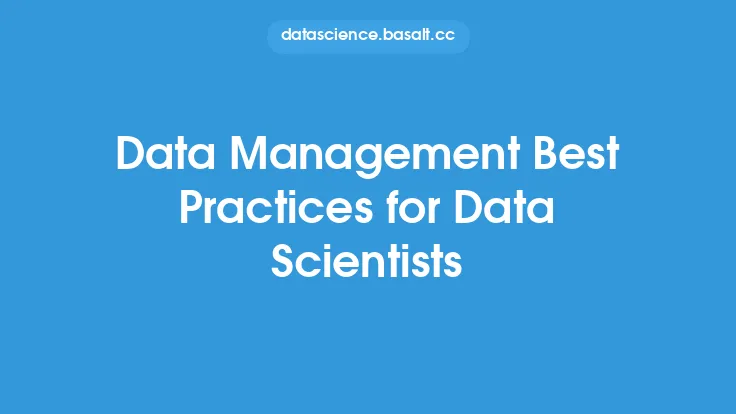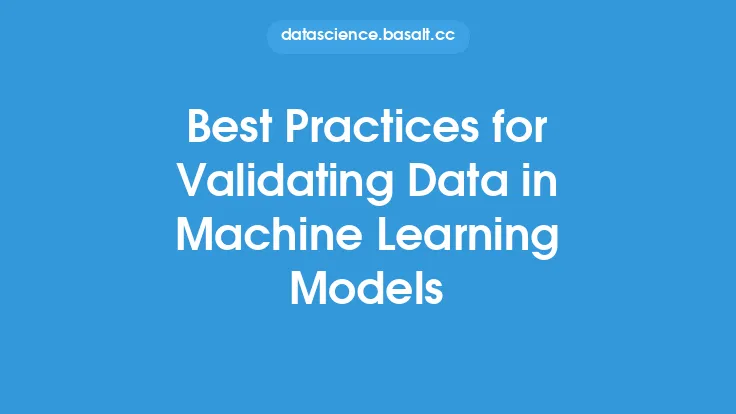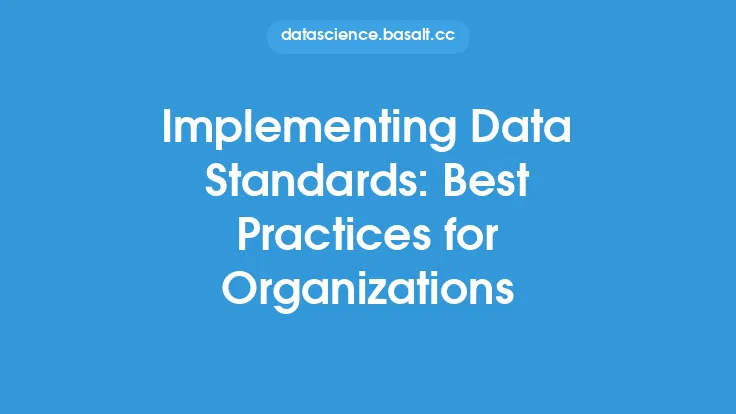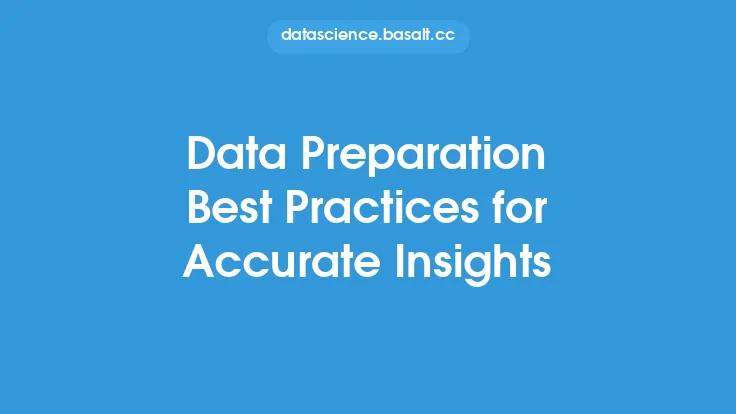Data completeness is a critical aspect of data quality that ensures data scientists have all the necessary information to make informed decisions. In data science, data completeness refers to the extent to which a dataset contains all the required data elements, without any missing or null values. Achieving data completeness is essential to build reliable machine learning models, perform accurate analysis, and make data-driven decisions. In this article, we will discuss the best practices for data scientists to ensure data completeness.
Introduction to Data Completeness Best Practices
Data completeness best practices are guidelines that data scientists can follow to ensure that their datasets are complete, accurate, and reliable. These best practices involve a combination of data collection, data processing, and data validation techniques to identify and address missing or incomplete data. By following these best practices, data scientists can minimize the risk of incomplete data, reduce errors, and improve the overall quality of their datasets.
Data Collection Best Practices
Data collection is the first step in ensuring data completeness. Data scientists should follow best practices when collecting data to minimize the risk of missing or incomplete data. Some of these best practices include:
- Defining clear data requirements: Data scientists should clearly define what data is required to achieve their goals. This includes identifying the relevant data elements, data formats, and data sources.
- Using multiple data sources: Using multiple data sources can help to reduce the risk of missing or incomplete data. Data scientists can combine data from different sources to create a more comprehensive dataset.
- Implementing data validation rules: Data validation rules can help to ensure that data is accurate and complete. Data scientists can implement rules to check for missing or invalid data, and to ensure that data is in the correct format.
- Using data collection tools: Data collection tools, such as surveys, forms, and sensors, can help to automate the data collection process and reduce the risk of human error.
Data Processing Best Practices
Data processing is the next step in ensuring data completeness. Data scientists should follow best practices when processing data to minimize the risk of missing or incomplete data. Some of these best practices include:
- Handling missing data: Data scientists should have a plan for handling missing data. This can include imputing missing values, using interpolation or extrapolation techniques, or using machine learning algorithms to predict missing values.
- Data cleaning: Data cleaning involves removing duplicates, handling outliers, and transforming data into a consistent format. Data scientists should use data cleaning techniques to ensure that data is accurate and complete.
- Data transformation: Data transformation involves converting data from one format to another. Data scientists should use data transformation techniques to ensure that data is in a format that is suitable for analysis.
- Data quality checks: Data quality checks involve verifying that data is accurate, complete, and consistent. Data scientists should use data quality checks to identify and address any data quality issues.
Data Validation Best Practices
Data validation is the final step in ensuring data completeness. Data scientists should follow best practices when validating data to minimize the risk of missing or incomplete data. Some of these best practices include:
- Using data validation rules: Data validation rules can help to ensure that data is accurate and complete. Data scientists can implement rules to check for missing or invalid data, and to ensure that data is in the correct format.
- Using data quality metrics: Data quality metrics, such as data completeness, data accuracy, and data consistency, can help to evaluate the quality of a dataset. Data scientists can use these metrics to identify and address any data quality issues.
- Performing data audits: Data audits involve reviewing data to ensure that it is accurate, complete, and consistent. Data scientists can perform data audits to identify and address any data quality issues.
- Using data visualization techniques: Data visualization techniques, such as plots and charts, can help to identify patterns and trends in data. Data scientists can use these techniques to visualize data and identify any data quality issues.
Technical Considerations for Data Completeness
From a technical perspective, ensuring data completeness requires a combination of data management, data processing, and data analysis techniques. Some of the technical considerations for data completeness include:
- Data storage: Data scientists should use a data storage solution that is scalable, secure, and reliable. This can include relational databases, NoSQL databases, or cloud-based data storage solutions.
- Data processing: Data scientists should use a data processing solution that is fast, efficient, and scalable. This can include distributed computing solutions, such as Hadoop or Spark, or cloud-based data processing solutions.
- Data analysis: Data scientists should use a data analysis solution that is flexible, scalable, and reliable. This can include statistical analysis software, such as R or Python, or machine learning software, such as scikit-learn or TensorFlow.
- Data quality tools: Data scientists should use data quality tools, such as data validation software or data quality metrics software, to evaluate the quality of their datasets.
Conclusion
In conclusion, data completeness is a critical aspect of data quality that ensures data scientists have all the necessary information to make informed decisions. By following best practices for data collection, data processing, and data validation, data scientists can minimize the risk of missing or incomplete data, reduce errors, and improve the overall quality of their datasets. Additionally, technical considerations, such as data storage, data processing, and data analysis, should be taken into account to ensure that data is handled efficiently and effectively. By prioritizing data completeness, data scientists can build reliable machine learning models, perform accurate analysis, and make data-driven decisions that drive business success.





